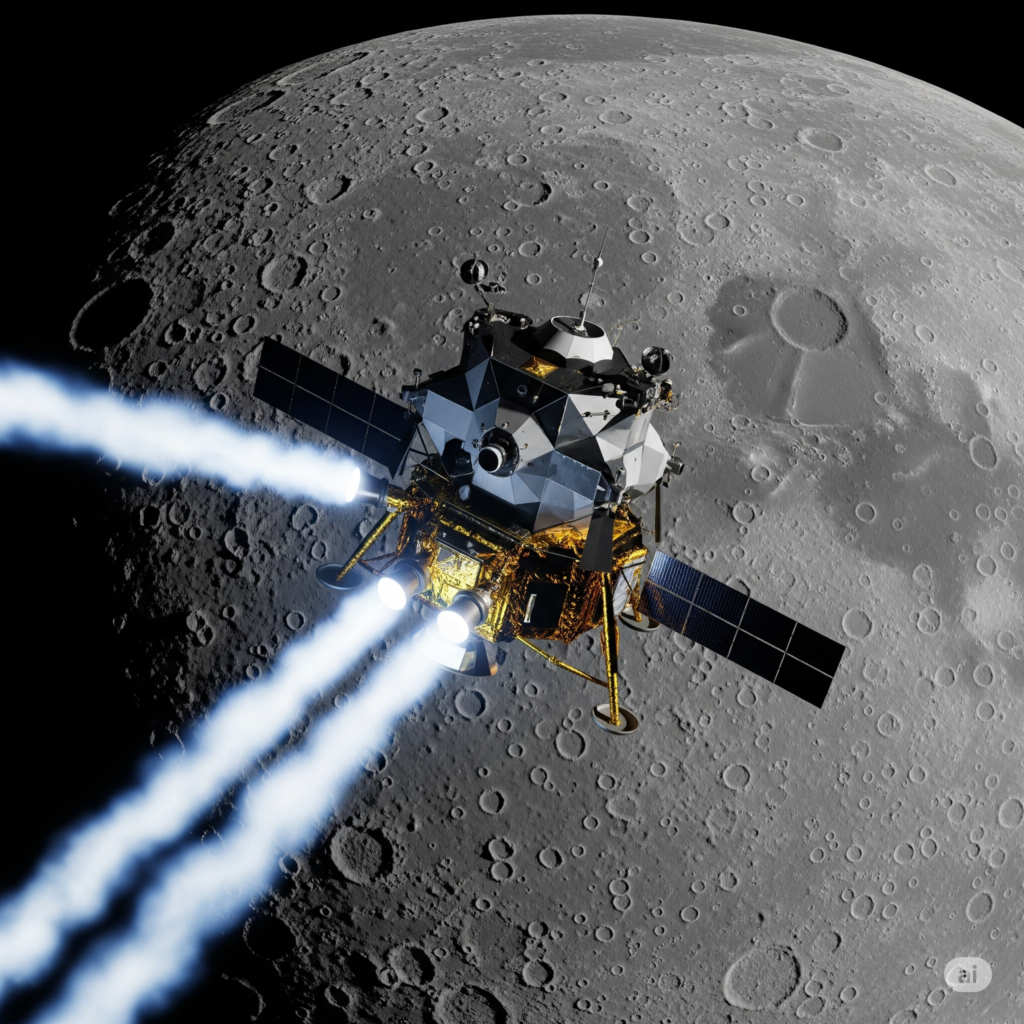Gist:
- Japan’s private aerospace company, ispace, is attempting a historic lunar landing with its Resilience lander.
- If successful, it will be the first privately-led mission to achieve a soft landing on the Moon.
- The mission underscores Japan’s rising role in space exploration and the global push toward lunar commercialization.
- The blog explores ispace’s journey, mission objectives, the technological details of Resilience, and the broader implications for science, geopolitics, and space commerce.
A New Moonshot
The Moon, once the final frontier, is quickly becoming the launchpad for humanity’s next phase of space exploration. While nations like the U.S., China, and India dominate the headlines, a quieter but equally ambitious player has emerged: Japan’s ispace. The private company is on the brink of making history as its lunar lander, aptly named Resilience, prepares for a high-stakes landing attempt on the Moon.
In a world where private firms are increasingly taking center stage in space innovation, ispace’s mission could mark a pivotal moment. More than just a technological feat, it symbolizes a new chapter in international collaboration, lunar science, and commercial space activity.
Who Is ispace? The Rise of a Lunar Pioneer
Founded in 2010, ispace began as a participant in the Google Lunar XPRIZE, a competition that challenged private companies to land a robot on the Moon. Although the prize ended without a winner, ispace continued developing its lunar technology.
Headquartered in Tokyo with subsidiaries in the U.S. and Europe, ispace is a frontrunner in lunar logistics. Its goal? To build a lunar transportation infrastructure to support human and robotic missions.
Mission Statement: “Expand Earth’s economy into space.”
Their flagship program, Hakuto-R, includes a series of missions aimed at exploring the Moon and delivering commercial and scientific payloads. Resilience is part of Mission 2, following the learnings from the earlier Mission 1 attempt.
Meet Resilience: The Star of the Show
Resilience is a compact, lightweight lunar lander built for flexibility and reliability. Designed for a soft landing, it integrates multiple systems for autonomous navigation, landing, and communication.
Technical Highlights:
- Height: ~2.3 meters
- Payload capacity: Up to 30 kg
- Power: Solar panels
- Navigation: LIDAR, inertial measurement units (IMUs), star trackers
- Communication: Deep space X-band and S-band
Resilience is carrying scientific and commercial instruments, some from international partners. These include lunar surface sensors, imaging tools, and potentially small rovers or other payloads.
Why This Landing Matters: The Stakes and the Science

A successful landing would be a landmark achievement for private aerospace companies worldwide. Until now, soft lunar landings have only been conducted by national agencies like NASA, Roscosmos, CNSA, and ISRO.
Implications:
- ispace could become the first private company to land on the Moon.
- Opens doors for future commercial deliveries.
- Validates small, cost-effective lunar landers.
- Provides data critical for future manned missions.
In addition to proving its own capabilities, ispace will gather valuable information about the lunar surface, including temperature profiles, soil conditions, and communication latency.
Commercial Lunar Economy: The Bigger Picture
NASA’s Artemis program, China’s lunar missions, and private ventures like SpaceX are all part of a growing lunar ecosystem. ispace’s success could accelerate this commercial landscape.
Market Opportunities:
- Resource extraction (e.g., water ice, rare minerals)
- Lunar construction
- Space tourism and exploration
- Science missions for universities and companies
Japan could also become a preferred partner in space logistics, offering services similar to what SpaceX provides for Earth orbit.
The Role of Japan: Geopolitical and Technological Implications
Japan is no stranger to space success. Its space agency, JAXA, has led missions to asteroids (Hayabusa1 and 2) and partnered on the ISS. ispace represents Japan’s extension into commercial leadership.
Benefits to Japan:
- Increased global technological prestige
- Stronger space sector economy
- Strategic alliances with Western space powers
- Educational and scientific inspiration for the next generation
Challenges and Risks: What Could Go Wrong?
Lunar landings are notoriously difficult. Past attempts by India (Chandrayaan-2) and Israel (Beresheet) ended in crash landings. Challenges include:
- Precise navigation in low-gravity
- Real-time decision-making delays due to distance
- Harsh thermal conditions
ispace has used data from its earlier missions to improve Resilience. Still, the margin for error is slim.
What Happens After the Landing?
If Resilience lands safely, it will begin data transmission and deploy its instruments. The mission duration is expected to last 10-14 days, the length of one lunar day.
Post-landing Goals:
- Transmit high-resolution images and videos
- Collect data from surface experiments
- Demonstrate hardware survivability
- Prepare for future missions including potential sample-return
The Future of ispace and Lunar Exploration
Looking ahead, ispace plans several follow-up missions under the Hakuto-R program. These may include rover deployments, longer-duration surface ops, and partnerships with governmental agencies.
Vision:
- Establish a regular transport system to the Moon by the 2030s
- Enable sustainable lunar habitation
- Support lunar economy through ISRU (In-Situ Resource Utilization)
Their modular and scalable lander design also positions ispace well for future asteroid missions and even Mars logistics.
Conclusion: A Giant Leap for Private Spaceflight
Whether Resilience lands successfully or not, ispace has already made a name for itself as a trailblazer in commercial space. Their mission reflects the new paradigm: space is no longer just for governments.
As private firms like ispace, Astrobotic, and Intuitive Machines join the ranks, the Moon becomes not just a destination, but a platform for innovation, research, and economic activity. In this new space race, resilience isn’t just a lander—it’s a mindset.









+ There are no comments
Add yours